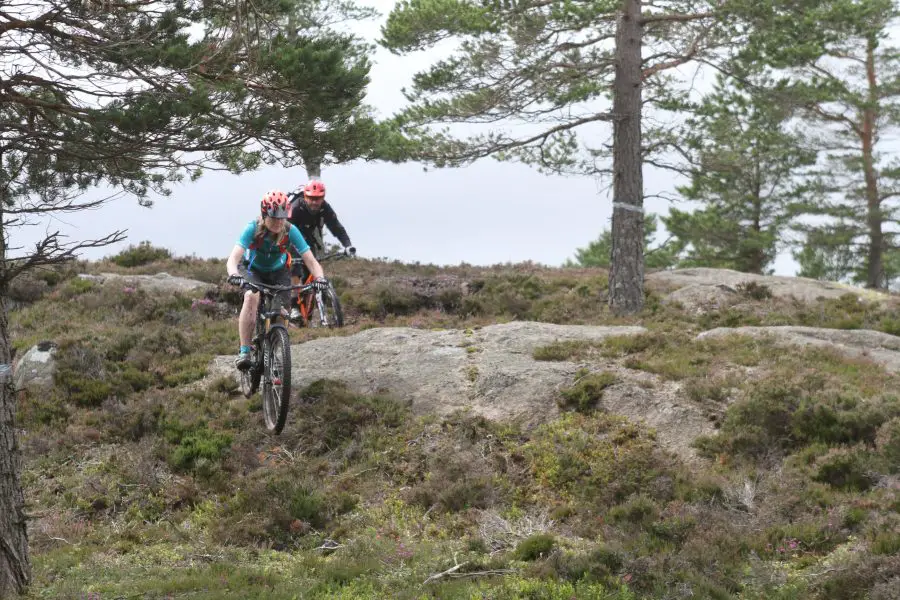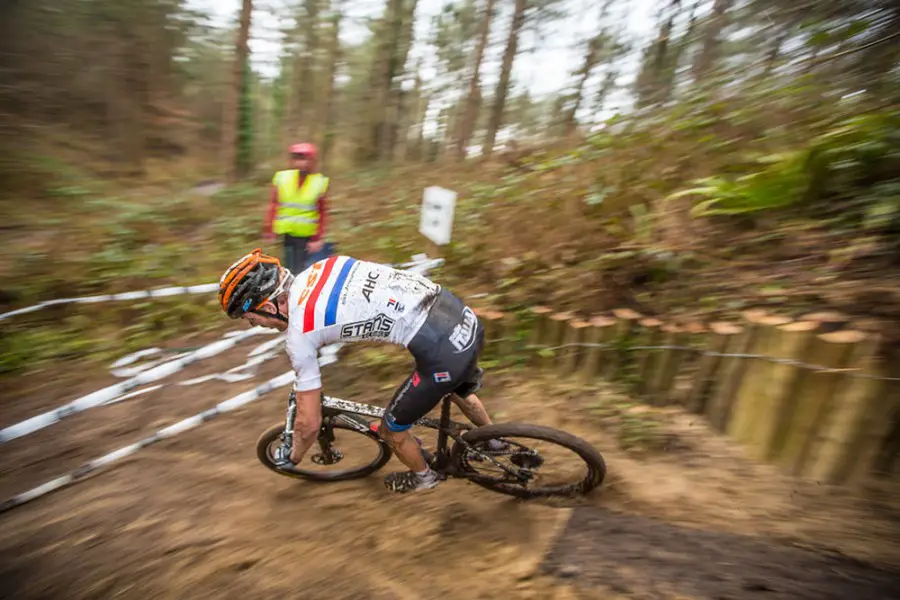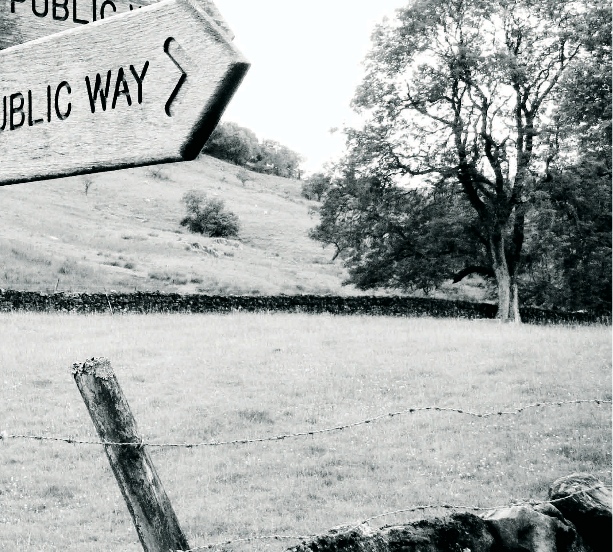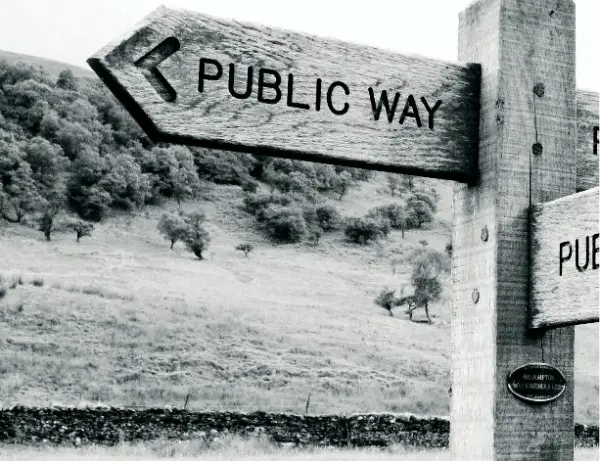There’s trails, and there’s cheeky trails. All too often those cheeky trails are the ones where all the fun lies. No amount of polite stopping for walkers, cheery thank yous and grateful smiles can hide the fact that, strictly speaking, you’re not supposed to be there. Scottish riders of course have no such troubles and are free to roam as far as their legs and tyres will allow them. A recent consultation on Welsh access rights showed a clear demand for increased access to the countryside for different types of activities. Hopefully the pressure to change the rules is now mounting, as today the two main cycling advocacy groups in the UK, British Cycling and Cycling UK has backed open letters to Environment Secretary Liz Truss and Welsh Environment Secretary Lesley Griffiths calling for people on bikes to have responsible access to more public paths in the England and Wales countryside.
The press release from British Cycling says:
Due to archaic public access and rights of way laws, it is currently illegal for people on bikes to access the majority of the countryside in England and Wales. At present, if you choose to ride a bike you only have access to less than a third of the 140,000 miles of public paths. There is also little access to the three million acres of Open Access Land or the 2,800 miles of newly created coastal access. Meanwhile, if you are on foot you have free and open access to all of this land.
British Cycling’s chief executive, Ian Drake, said:
“England and Wales is packed with outstanding countryside on millions of people’s doorsteps but, due to outdated and confusing rights of way legislation, much of it is only open to you if you choose to walk.
“We know that many people will simply not consider cycling unless they can do it on a traffic-free route. While national and local government work on putting cycle lanes in place across our towns and cities, countryside paths are fantastic, free alternatives that could be enjoyed responsibly by mountain bikers and families alike.
“At a time when obesity levels and air pollution in our cities is at an all-time high, we call on the government to act to make sure that the massive opportunity to get active in the countryside is not wasted.”

It is claimed that as a result of the Scottish Land Reform Act, brought in in 2003, mountain biking grew by up to 10% from 2011 to 2014 and is worth £49.5 million per year to the Scottish economy.
The letters sent today suggest that piloting the responsible access model in suitable areas of the countryside will prove the viability and benefits of adopting the Scottish access model in England and Wales. The letters ask the government:
“to work in partnership with sector stakeholders to commission research and support pilots in selected areas to test how enhanced responsible outdoor access could work in England [and Wales].”
Recently announced Rio 2016 Olympian Grant Ferguson said:
“I love riding my bike in the outdoors and care about how it is used. I always ride responsibly with consideration for other people, and if I could ride my bike on more public paths it would make an amazing difference to my training. The access laws in England and Wales are holding us back at the moment because it is so hard for us to find suitable routes to ride on. We’d love the freedom to be able to enjoy acres and acres of land where it is currently illegal for us to ride.”

Keen mountain biker and Olympic gold medallist Chris Boardman has also signed the letter alongside a host of outdoor recreation organisations including the Sport and Recreation Alliance, the British Mountaineering Council, the British Horse Society, Cycling UK and the Bicycle Association.
Chris Boardman commented:
“I love riding trails and in Scotland it is so much easier to get to really remote areas and enjoy riding in some beautiful landscapes. The Land Reform Act in Scotland has proved that this can work and it is about time that England and Wales realise the massive opportunity this presents.”
Mountain bike advocacy network, OpenMTB, who have been involved as advisors, have been quick to praise both British Cycling and Cycling UK, with member Tom Hutton saying that it’s great to see everyone pulling together in order to improve access, and adding that there is now a real belief in the mountain bike community that things can be changed.
Imagine the miles of new Classic Rides we’d be able to bring you if this actually happens. Whole new areas of the UK currently underpopulated by interesting or sensibly looping bridleways would be open to us. And for those of us who like a carefully constructed berm, perhaps the trail centres would be a little quieter. Fingers crossed.
Comments (22)
Leave Reply
Post Comment



Unfortunately Olympians “training” on footpaths is exactly the counter argument that will be used.
Perhaps a bit more about how we could easily get along out there would be more useful
Not in favour of blanket access for all. What I would like to see however is the Local Access Forums discussing what footpaths are appropriate for shared use. We need to respect that we have a working landscape and not all of it is suitable for use as a playground.
It’s simple.
It works in Scotland, so it work in England.
No further discussion needed. All the negative arguments do not stack up.
epicyclo – it may be simple in Scotland but not in England, especially the over-crowded South. In an ideal world there’d be a complete overhaul of the RoW network.
It has to be national and it has to be legislative. It would not work unless it is universally applied. Responsible use would need to be promoted alongside it, and this would need to take into account all the implications of a ‘working landscape’, much as it does in Scandinavia and Scotland.
I’m not sure if it will ever be achieved though. The power of the interest groups that would oppose this are considerable, and user group conflicts would persist. Also, I can’t envisage the current government having the will to take on this issue, as it is, it cannot even fight its way out of the paper bag it has put on its own head.
One ROW Officer a while ago pointed out to me that in order to open everything up to bikes, we’d have to include horses – which would mean changing every stone-wall stile and snicket gate to be horse-friendly, which’d never work. He suggested just turning all regulations off at 6pm every night until the following morning… So that footpaths became bridleways every evening and then changed back in the morning 🙂
^chipps
That is just so simple its genius!
Ah but other users would still moan!
I see this as an opportunity for mtb’ers to get involved in the LAF’s and push for change via well reasoned and sensible discussion. Users all need to work together and get these stupid assumptions about us put to bed once and for all.
No reason why paths should have to be opened to horses too. There’s currently no requirement that bridleways must be accessible to bicycles.
Leave the network alone, allow the cyclist to decide which RoW are worth riding and which are not, sort out local conflicts as and when they arise. As has been said, it works in Scotland – even around Edinburgh and Glasgow.
Why should cycle access remain shackled to equestrian access though Chipps? (I know it’s not your decision!) that’s the root of the issue in many instances.
I like the time-bounded solution (in theory!?) or a middle way along the lines suggested by CG – Introduce a new category of “Foot & Bike-paths” (needs a snappier title!) for those that are clearly suitable for bikes but not horses. Then reassess every RoW to fit in one of the three categories.
(I should say I’d prefer Scottish style access but recognise the uphill struggle that’s going to be given what Faustus rightly says up there ^^)
Great to see some big advocacy.groups getting involved.
As for issues I can’t see increasing “open access” being a good idea, round here the OA areas are largely heather or bracken moorland and tromping over them unrestricted would be bad for business and habitat.
To me the sensible thing would be to remove the legal restrictions on users of RoW but leave the obligations on land owners as they are. A footpath should be required to be accessible to foot traffic but you can use it if you wish with a bike or horse, just don’t be surprised if you can’t navigate it because of stiles and kissing gates*. A bridal way should be required to be accessible to horses (some I’d pay to see a horse negotiate) and so on
It may be that in the interests of the longer term you legislate that repairs to “structures” on the RoW should all be horse accessible, so when you finally replace that knackered stile you have to do so with a horse gate, but until that point if it’s functional it can stay as it is.
*that’s what we’ve always called them, they’re probably something else.
eh? I’m not supposed to be riding a bike on footpaths? ermm..
getting trails transferred piece meal on a case by case basis would take forever plus the amount of nimbys means the whole thing would soon be bogged down and unworkable. If it’s going to happen it needs to be an across the board change with an opt out for _real_ special cases – or a swap back if there are widespread conflicts post change. (ie not just a couple of idiots)
“it may be simple in Scotland but not in England, especially the over-crowded South.”
It could by a county-council level and/or national park ruling perhaps to change local bylaws.
I agree that rather than upgrading footpaths to bridleways, the rules are changed to allow bikes on footpaths with the caveat that its not the landowner’s responsibility to replace stiles with gates. ie if you want to ride there, be prepared to have to hoik your bike over a stile or through a narrow gate or two.
Why is it simple in Scotland and not in England?
Change to open access doesn’t mean anyone has to do anything to the trails.
Lots of assumptions are being made which do not turn out to be the case in practice.
Or to paraphrase an ex Australian PM, “That may work in practice but it doesn’t fit my assumptions”
Stiles and gates need to be replaced anyway as part of cyclic maintenance, so any that are specifically installed to deter bikes could be replaced with a more bike or horse friendly design once they wear out.
The idea that bikers and horses will roam everywhere willy-nilly is ridiculous. Giiven the choice of bushwacking across open country or following an obvious path, users will always take the obvious path.
The impression I get from riding in Scotland is that implementing open access was often as simple as repainting signs so that they just said “path” instead of “footpath”.
Oh and there are very limited benefits to being involved with an LAF if you’re an MTBer. There’s no requirement to keep bridleways suitable for bikes, for example. Upgrading a footpath is a tortuous and expensive process even with landowner support. Not to mention the fact that LAF meetings are always held in the middle of the week when most folk under 55 are at work.
dangeourbrain, the last thing we want is footpath repairs (which have been opened up) being made accessible to horses (not legally, but surface suitability). This (and to provide access to all terrain wheel chairs) is whats happened in the peaks (on byways open to all traffic), and in the lakes. I don’t believe all trails should be suitable (or be expected to be) for all users. The legal restrictions should just be lifted, and the user groups can decide for themselves what is suitable for there needs or not, historic use (or ROW classification) could be used to identify (with user group input) trails which should be maintained to a certain level to allow continued access for horse riders/disabled. The declassification of trails should not impose additional expense to the land owner or the idea will never get off the ground.
Horses can go anywhere here, and they do chop up the tracks.
The answer is to ride a suitable bike that can handle that.
Open access means just that and horse riders have the same rights. I just wish they’d pick up the shit though. 🙂
Not the most negative response from the Ramblers.
http://www.ramblers.org.uk/news/news/2016/july/british-cycling-calls-for-increased-access-for-cyclists.aspx
As a cyclist I avoid trails during the day that are full of walkers, and chose quieter or cheekier trails. When I use popular trails me and my mates start after 8pm so we can ride at a decent speed without conflict with walkers or horses. There are plenty of footpaths that are underused, passing cyclists would help keep the paths open and passable, Most mtbers can lift their bikes over stiles and access paths that are not accessible to horses.